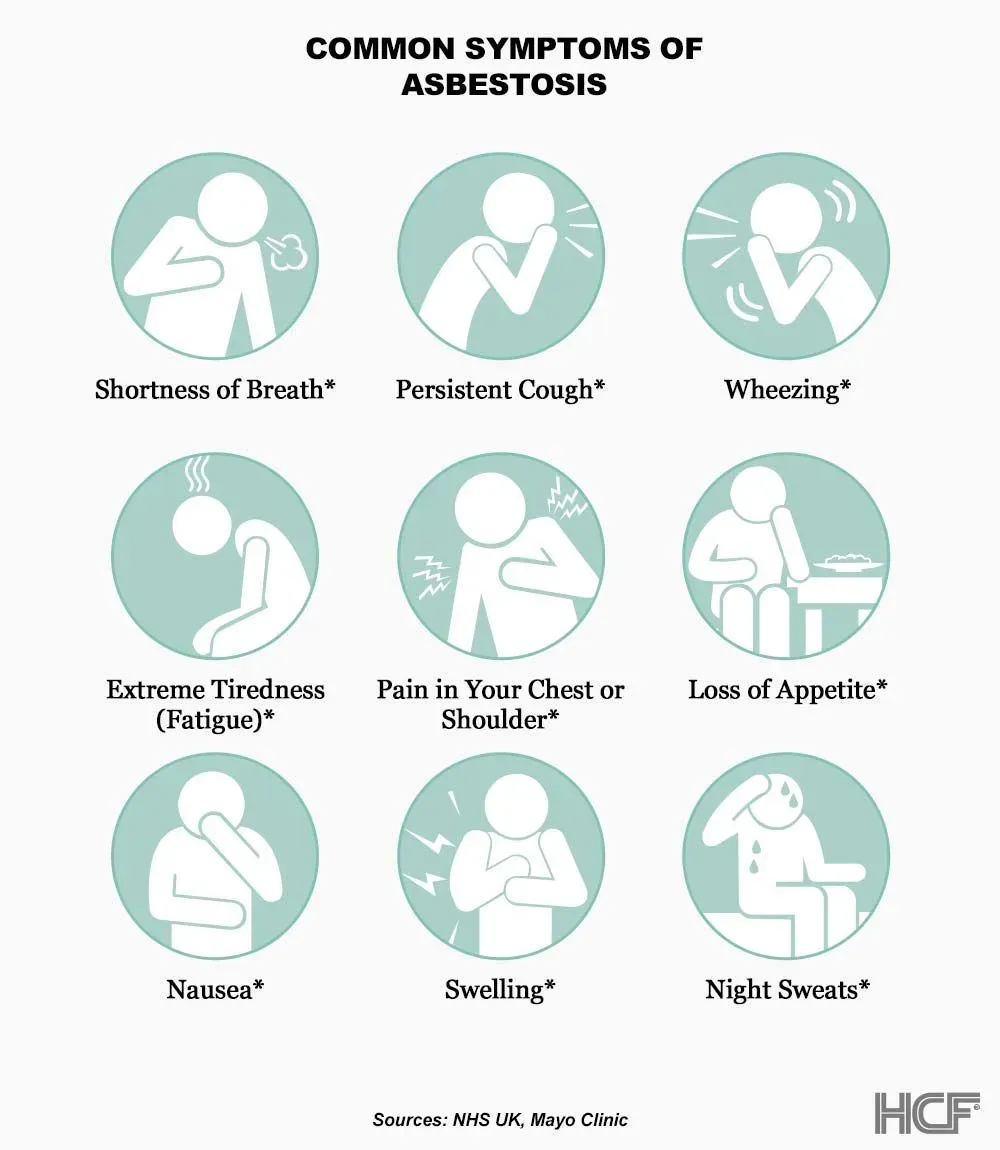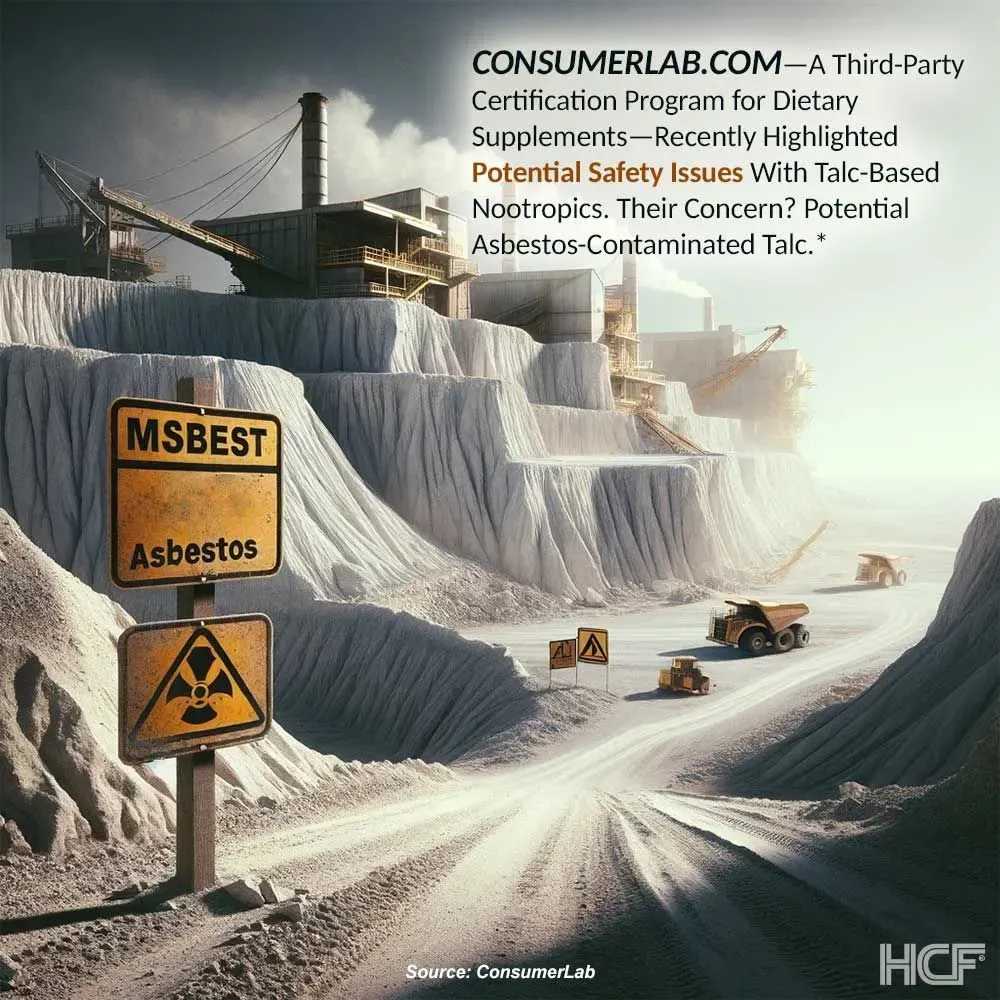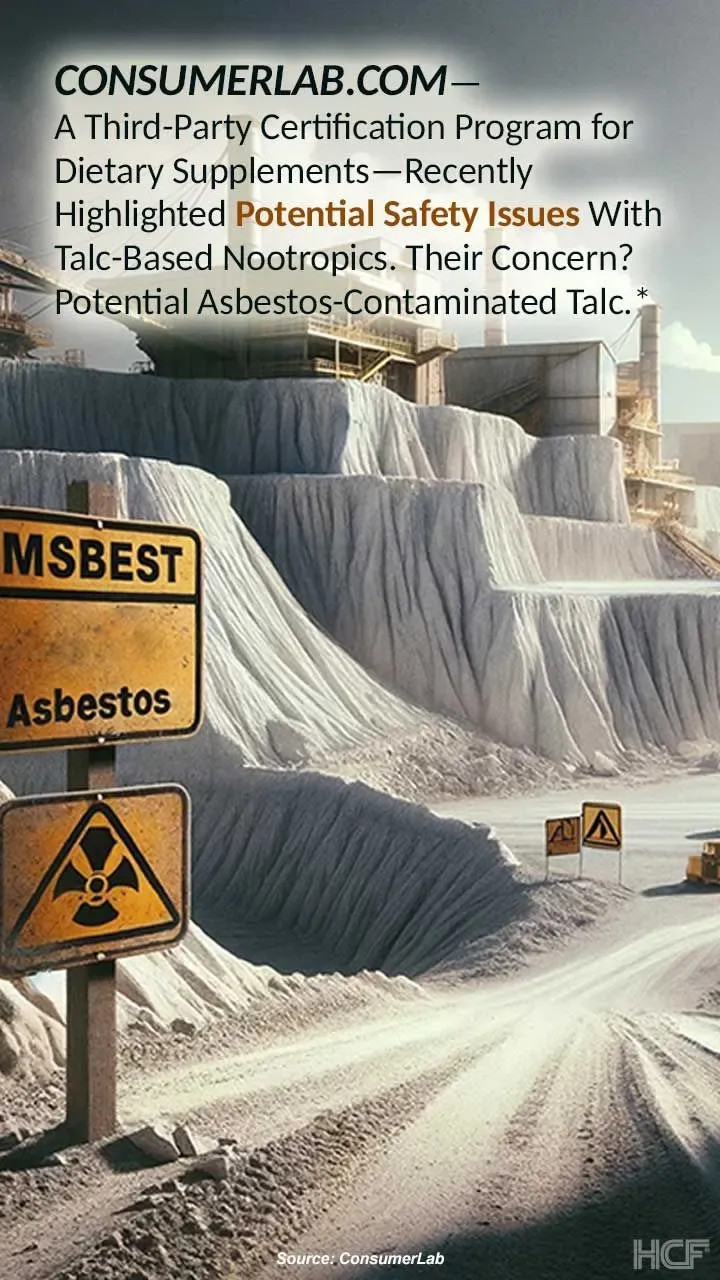
2EXCIPIENTS
Unearthing the Link: Talc Mines & Asbestos Proximity
2 min read
**
Essentials
- Nootropics commonly use Talc as an anti-clumping agent to prevent ingredients from sticking during production, but the source of Talc may pose risks due to potential asbestos contamination.*
- While the FDA doesn't mandate asbestos testing for Talc in nootropics, third-party organizations like ConsumerLab.com have raised concerns about potential contamination.*
There are many things to consider when choosing the right nootropic. First up, what's the goal? Are we talking about needing to stay sharp for studying or just looking to stay on point in those back-to-back meetings?
Quality is also important. Check out where it comes from and what's in it—like reading the back of a cereal box but way more important.
And always think about long-term effects—natural doesn't always mean risk-free.
But here is something you probably haven't considered yet: Can your favorite nootropic contain… Asbestos? Yes, you read that right. And the answer may surprise you.
Some nootropics may contain Talc.
Talc (a naturally occurring mineral) is often used as an anti-clumping agent in many nootropics. The reason? It prevents ingredients from sticking to machinery during the tablet-making process.
While Talc itself may not be harmful, the real concern arises from where it's sourced. Talc and Asbestos are minerals that can be found together in the earth. So, when Talc is mined for commercial use, there's a risk it may be contaminated with Asbestos.*
Asbestos exposure is no joke.
(!) Even the smallest amount of inhaled or ingested Asbestos can lead to severe conditions.1,2 And, to make things even worse, the symptoms associated with Asbestos exposure can take anywhere from 10 to 60 years to develop.*3


But the Talc used in nootropics is tested, right?
Yes and no. The Food and Drug Administration (FDA) does not require testing cosmetics for Asbestos. Still, it encourages companies to carefully consider Talc mines to avoid Asbestos cross-contamination.
Did you know?
The FDA is currently doing random sampling of cosmetic products, for the presence of Asbestos, which they're not doing for nootropics.4
The good news? Many brands do test their Talc.*


So, how can you tell if Talc is asbestos-free?
Easy. Opt for nootropics with clear labeling and the USP seal easily visible on the label. Or, even better, look for brands (like HCF®) that don’t use Talc in their nootropics at all.
Our dedication to transparency and quality is evident in our strict adherence to clear-label principles and our 7 Advances® that go beyond simply avoiding unnecessary fillers, binders, and additives.
At HCF®, we understand that true cognitive restoration requires more than just nourishing and supporting the Head [1st Brain]. What we do is a comprehensive approach that focuses on all three interconnected Intelligence Centers—the head, heart, and gut.*
Unnecessary or potentially dangerous excipients, binders, or additives that may hinder nutrient absorption and cause potential health concerns in the long run have no place in our advanced nootropics.*